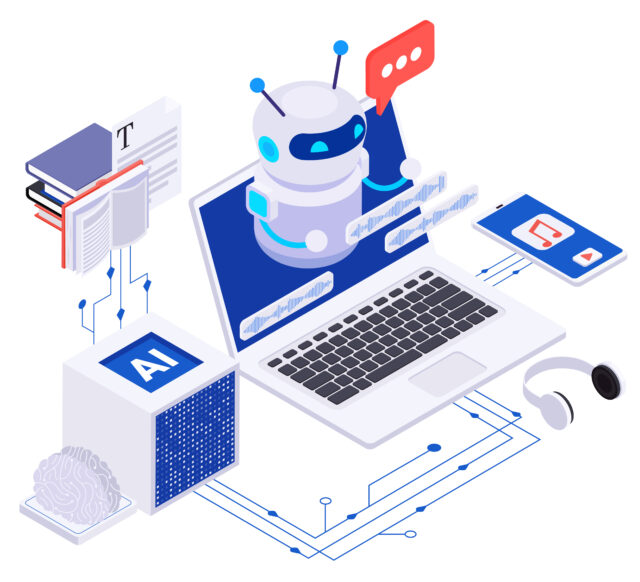
By Mikhail Khomutetsky, Founder of Turbologo
The world of e-commerce is no longer just about having a digital storefront. In 2025, it’s about leveraging artificial intelligence (AI) to create smarter, faster, and more profitable businesses.
I’ve worked with countless entrepreneurs and startups over the last decade — and I see the same pattern repeat itself: they have the product, the passion, the drive, but they’re drowning in repetitive tasks and unsure how to scale.
This article is a practical guide, not a theoretical overview. I’ll show you exactly how AI can become your competitive advantage, and which strategies you can implement today — even without a tech background.
1. Hyper-Personalization with AI Recommendations
Personalization isn’t optional in 2025. Shoppers expect tailored experiences — from product suggestions to dynamic layouts based on their behavior.
AI-powered recommendation engines analyze user behavior, purchase history, and even real-time browsing patterns to display relevant products. Tools like Recombee or Amazon Personalize are widely used, but even small businesses can tap into similar power through platforms like Shopify or BigCommerce.
Expert Tip: Start small. Add “Recommended for You” blocks to product pages or emails. Measure click-through and conversion rates before scaling.
2. Dynamic Pricing to Stay Competitive
Manually adjusting prices is outdated. AI allows you to set up dynamic pricing rules that consider competitor pricing, demand, inventory, and even customer segments.
With tools like Prisync or Omnia Retail, ecommerce businesses can maintain profit margins while staying competitive.
Dynamic pricing isn’t just about discounts. Use it to reward loyalty or raise prices subtly during peak demand.
3. AI-Powered Chatbots and Virtual Assistants
Customers expect 24/7 support. But hiring round-the-clock agents is expensive. AI chatbots handle repetitive queries, guide users through purchase funnels, and even upsell.
In 2025, these bots are getting better at tone, nuance, and personalization. Tools like Tidio, ChatGPT Plugins, or Drift make integration easy.
Use chat transcripts to refine your website content and address bottlenecks in the purchase journey.
4. Visual and Voice Search Optimization
E-commerce platforms are rapidly integrating visual and voice search. Users upload photos to find products or ask queries via smart assistants.
Make sure your product images are high quality and tagged with relevant metadata. For voice, optimize product titles and descriptions for natural language.
62% of Gen Z users prefer visual search over text — ignore this trend at your peril.
5. Predictive Analytics for Smarter Decisions
 AI helps forecast trends, demand spikes, or even customer churn. Predictive analytics tools analyze historical and real-time data to offer actionable insights.
AI helps forecast trends, demand spikes, or even customer churn. Predictive analytics tools analyze historical and real-time data to offer actionable insights.
Want to know which product will likely sell out next month? AI tells you. Tools like Google Cloud Forecasting, Looker, or Zoho Analytics make it accessible.
Expert Tip: Start tracking key metrics like average order value, session duration, and cart abandonment. Feed them into AI tools to spot patterns.
6. Automating Back-End Operations
AI doesn’t just help with sales — it transforms logistics. Smart inventory management, order routing, and fraud detection are now table stakes.
Platforms like ShipBob, TradeGecko, or even Shopify Flow offer AI-driven automations that cut manual work.
Automation isn’t about replacing humans. It’s about freeing them to do work that matters.
7. Generative AI for Product Descriptions and Images
Writing hundreds of product descriptions is time-consuming. AI tools like Jasper, Copy.ai, or Midjourney generate SEO-optimized copy and visuals in seconds.
Need new lifestyle images? AI can generate those too — consistent with your brand’s style.
Use AI-generated content as a base, not a final draft. Always review and align with your tone.
8. Ethical AI and Data Privacy
With great power comes great responsibility. As you collect more data, transparency becomes essential.
Ensure your AI tools comply with GDPR, CCPA, and other privacy frameworks. Clearly communicate what data you collect and how it’s used.
Ethical AI isn’t just good practice. It’s a competitive advantage in a trust-driven market.
How to Get Started Without Developers
If this list feels overwhelming, start with what you can control: your website. Your site is the foundation where most of these AI strategies come alive.
That’s exactly why we built the AI website builder Turbologo — a no-code, AI-powered tool that helps entrepreneurs create conversion-focused websites in minutes. Just describe your project in a few words, and the system generates pages, texts, and design automatically.
Whether you’re setting up a landing page, a blog, or a full product catalog, Turbologo gives you everything — from layout to visuals. You can even create a logo for your store in one click, aligned with your brand’s style.
I’ve seen countless entrepreneurs go from idea to online store in under an hour using our platform.
FAQ – Common Questions About AI in E-commerce
Q: Do I need coding experience to implement AI in my store?
A: No. Many tools are designed for non-technical users and integrate via plug-ins.
Q: What’s the ROI of using AI in e-commerce?
A: Higher conversion rates, reduced cart abandonment, and better customer retention. ROI varies, but results show quickly.
Q: Can AI help small e-commerce businesses, not just Amazon-size companies?
A: Absolutely. Many tools are affordable or freemium. AI levels the playing field.
Q: What’s the easiest way to start using AI?
A: Begin with chatbots or product recommendations. Then scale into pricing and analytics.
Final Thoughts
AI is no longer a buzzword — it’s a practical toolkit for growth. Whether you’re a solo founder or scaling a team, implementing even one of these strategies can deliver tangible results.
If you’re serious about e-commerce in 2025, stop thinking “someday” — and start building today.
Disclaimer
The information contained in South Florida Reporter is for general information purposes only.
The South Florida Reporter assumes no responsibility for errors or omissions in the contents of the Service.
In no event shall the South Florida Reporter be liable for any special, direct, indirect, consequential, or incidental damages or any damages whatsoever, whether in an action of contract, negligence or other tort, arising out of or in connection with the use of the Service or the contents of the Service. The Company reserves the right to make additions, deletions, or modifications to the contents of the Service at any time without prior notice.
The Company does not warrant that the Service is free of viruses or other harmful components












